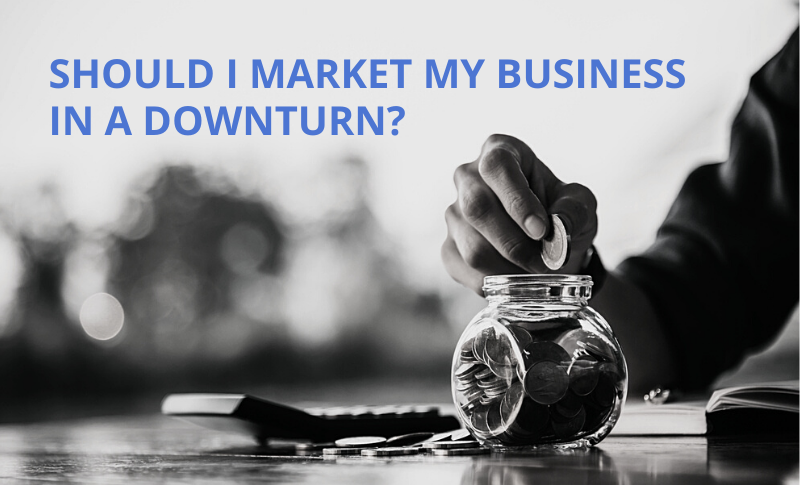Keep your marketing going (at some level) to stay strong.
By Barry Alt
![]()

By Barry Alt
As an online strategist with my digital agency Motorhead Digital, I’ve already weathered out 2 recessions – and come out fighting every time. Helping our clients navigate through the uncertain times ahead, I’ve heard the same question popping up time and time again over the last few weeks: should I market my business in a downturn?
The short answer? Yes. And I have the perfect real-life example to show you the difference between shutting up shop and thriving in the future.
Going back to the 1920s (yes, really but stick with me), Post Cereal quit their marketing and advertising efforts during the Great Depression. Kellogg’s doubled their ad budget. That effort set Kellogg’s to become the king of cereals for generations to come.
During this COVID-19 driven economic crisis, you need to ask yourself, will your business be like Post or Kellogg’s?
Over the years one thing that’s always amazed us is the fact that during every downturn in our country’s history the first thing that companies big and small do is cut their marketing and sales staff and cut back or stop their marketing and advertising spend.
We’ve spent some time digging into this and have learned that pulling back is OK, but entirely stopping your marketing and advertising activities is almost always the wrong thing to do.
We really never understood this as it just makes no sense. No matter what’s happening in the world there will always be companies and consumers that have money and the desire to purchase your products and services. If you pull back and go dark then you’ll be forgotten and it will be even harder to get your momentum back.
Here’s an example of how Kelloggs won the cereal wars of the Great Depression as noted in this 2009 piece in the New Yorker magazine.
In the late nineteen-twenties, two companies—Kellogg and Post—dominated the market for packaged cereal. It was still a relatively new market: ready-to-eat cereal had been around for decades, but Americans didn’t see it as a real alternative to oatmeal or cream of wheat until the twenties. So, when the Depression hit, no one knew what would happen to consumer demand. Post did the predictable thing: it reined in expenses and cut back on advertising. But Kellogg doubled it’s ad budget, moved aggressively into radio advertising, and heavily pushed its new cereal, Rice Krispies. (Snap, Crackle, and Pop first appeared in the thirties.) By 1933, even as the economy cratered, Kellogg’s profits had risen almost thirty per cent and it had become what it remains today: the industry’s dominant player.
You may be asking yourself what does the marketing of cereal in the 30’s have to do with advertising my business today in 2020? All we can say is: EVERYTHING! In the same article, the author noted that:
In 1927, the economist Roland Vaile found that firms that kept ad spending stable or increased it during the recession of 1921-22 saw their sales hold up significantly better than those which didn’t. A study of advertising during the 1981-82 recession found that sales at firms that increased advertising or held steady grew precipitously in the next three years.
Here are four things to consider from this September 2019 Forbes article when thinking about cutting back on advertising during this crisis.
The bottom line is that if you pull back and go dark, there’s a good chance that the market will leave you in the dust – and it will take longer to recover even after this is over.
In lean times the key question is to think about WHAT your marketing strategy is going to be going forward. Will you keep things the same, pull back entirely or keep things going with a minimum viable investment so you can come out strong on the other side?
Statistics show that businesses that stop their marketing entirely have a higher chance of failure on the other side of a crisis than those that keep things going at some level. You can use Kellogg’s as noted above as a shining example of what happens when you keep your marketing going.
When you keep at it, your business has a much higher chance of coming out the other side stronger.
What this graphic represents is that at a high level, marketing takes time to work. Getting leads and clients is the result of an investment made weeks ago…
Please head on over to the Motorhead Digital Blog for the rest of this article.
Barry is the founder of Motorhead Digital, providing signature Marketing Maximizer™ programs specifically developed for auto restoration, performance and restyling shops. These programs are geared towards customer acquisition and conversion to keep those project bookings coming. With over 23 years of experience in digital marketing and web development, Barry’s goal is to help clients market and grow their shops through strategic marketing practices. You can reach him at (585) 766-9785, [email protected] or online at MotorheadDigital.com
